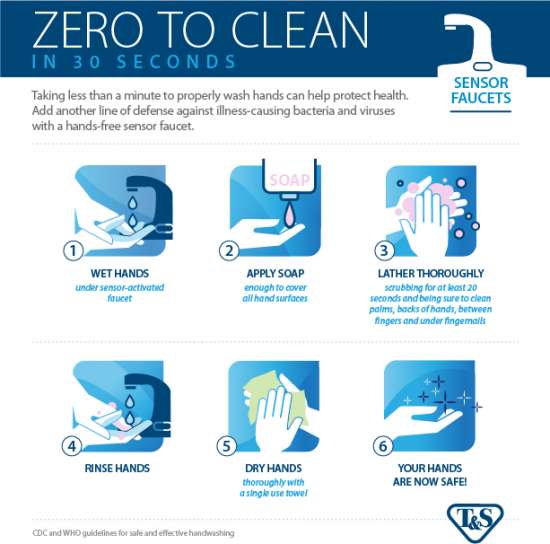Boosting hand hygiene in restaurants | A two-step guide
Articles
Amid ongoing efforts to prevent the spread of the coronavirus, restaurants, like all public facilities, are facing intensified scrutiny surrounding hygiene and safety.
Industry experts as well as government agencies like the U.S. Food and Drug Administration (FDA) have continuously reinforced the importance of safe food handling practices - not only to reduce disease transmission but also to demonstrate to customers the business' commitment to their safety.
Many restaurant customers expect to see visible evidence of the steps a business has taken to safeguard health, from staff wearing masks to enhanced cleaning, hand sanitizing stations and more.
The guidelines
Major health organizations, including the Centers for Disease Control and Prevention (CDC) and the World Health Organization (WHO), acknowledge the critical role of handwashing in reducing the spread of illness. "Handwashing is the single most important means of preventing the spread of infection," the CDC says.
Handwashing has long been emphasized as a critical part of food safety, primarily as a means of reducing foodborne illness. While coronavirus is not known to be transmissible by food, many of the safety practices instituted to protect customers from infections like norovirus are also valuable in protecting against coronavirus.
FDA guidelines direct food employees to wash their hands frequently and using a technique that ensures thorough, safe washing.
In the wake of the coronavirus pandemic, industry leaders and government organizations have emphasized stringent safety measures, including more frequent washing, more available handwashing or sanitizing stations, and overall more attention to the critical nature of good handwashing.
Some restaurants have found creative ways to reinforce (or institute) good handwashing habits, like setting timers to remind workers to wash up on a pre-set schedule or using visual or other cues to ensure they wash for the recommended 20 seconds.
The expectations
Customers increasingly expect to see visual evidence of active cleaning in restaurants. A survey by Technomic found that 56% of consumers want to see staff "visibly cleaning" high-touch areas.
Visibility of staff hand washing facilities - and, critically, their use - may also make customers feel more comfortable patronizing a restaurant.
Providing customers with additional cleaning opportunities - in the form of sanitizing stations or portable hand sinks located outside traditional restroom environments - can reflect a business' commitment to and focus on safety.
Step 1: The fix
This focus on hand hygiene created by the pandemic has created high demand for hands-free sensor faucets, including among restaurants, where hands-free faucets can be installed in public-facing applications like restrooms as well as back-of-house applications like hand sinks.
FDA guidelines on handwashing advise workers to "avoid recontamination of hands and arms by using a clean barrier, such as a paper towel, when turning off hand sink faucets."
This guidance is often unknown or disregarded, so installing a touchless sensor faucet can alleviate the issue by removing the potentially contaminating touchpoint.
Sensor faucets also offer restaurants the added benefit of reducing water use and saving money.
T&S makes switching easy with a line of sensor faucets designed specifically for retrofitting in standard foodservice applications, eliminating the need to reconfigure existing sinks or plumbing.









